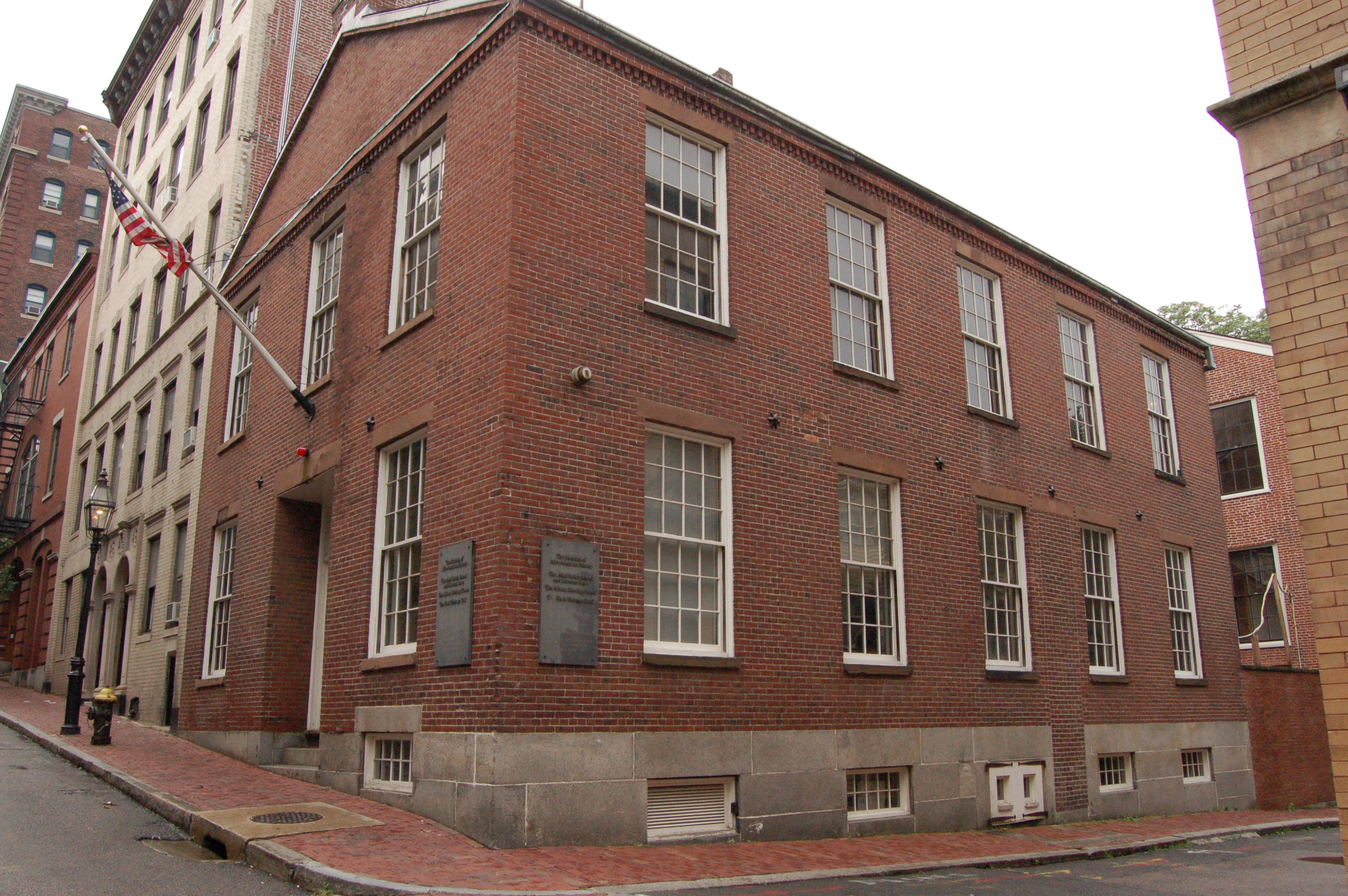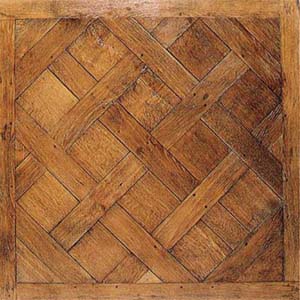|
Frederick Ayer Mansion
The Frederick Ayer Mansion is a National Historic Landmark on 395 Commonwealth Avenue in the Back Bay neighborhood of Boston, Massachusetts. The mansion was the home of Frederick Ayer, owner of the American Woolen Company, and features well preserved design work by Louis Comfort Tiffany. The house was added to the National Register of Historic Places in 2005. Historical significance The Ayer Mansion was built in 1900, designed by Louis Comfort Tiffany in a partnership with Alfred J. Manning. It is one of three surviving examples of Tiffany designed interiors. The other two sites are the Samuel L. Clemens (Mark Twain House) in Hartford, Connecticut (1881), and the Ferry House in Seattle, Washington (1903–1906). What makes the Ayer Mansion so unusual is that Tiffany also designed exterior mosaics for the property. The only other building known to have included this feature by Tiffany was his private residence, Laurelton Hall, which was destroyed in a fire in the 1950s. Indi ... [...More Info...] [...Related Items...] OR: [Wikipedia] [Google] [Baidu] |
Laurelton Hall
Laurelton Hall was the home of noted artist Louis Comfort Tiffany, located in Laurel Hollow, Long Island, New York. The 84-room mansion on 600 acres of land, designed in the Art Nouveau mode, combined Islamic motifs with connection to nature, was completed in 1905, and housed many of Tiffany's most notable works, as well as serving as a work of art in and of itself. On one visit to the Louis Comfort Tiffany mansion, Laurelton Hall, on June 4, 1916, Elizabeth "Bessie" Handforth Kunz wrote in the guest book: “Arabian night’s dreams vanish, at Laurelton a phantom has become reality, eternal.”Frelinghuysen, Alice Cooney. Louis Comfort Tiffany and Laurelton Hall: An Artist’s Country Estate. New York: Metropolitan Museum of Art. 2006. Page 223; a photo of the guestbook page is on page 200. The mansion was on the North Shore of Long Island, and had at that time 1,500 acres of woodland and waterfront, and was the location of a residential school for artists, the Tiffany Art Fou ... [...More Info...] [...Related Items...] OR: [Wikipedia] [Google] [Baidu] |
Historic District Contributing Properties In Massachusetts
History (derived ) is the systematic study and the documentation of the human activity. The time period of event before the invention of writing systems is considered prehistory. "History" is an umbrella term comprising past events as well as the memory, discovery, collection, organization, presentation, and interpretation of these events. Historians seek knowledge of the past using historical sources such as written documents, oral accounts, art and material artifacts, and ecological markers. History is not complete and still has debatable mysteries. History is also an academic discipline which uses narrative to describe, examine, question, and analyze past events, and investigate their patterns of cause and effect. Historians often debate which narrative best explains an event, as well as the significance of different causes and effects. Historians also debate the nature of history as an end in itself, as well as its usefulness to give perspective on the problems of the p ... [...More Info...] [...Related Items...] OR: [Wikipedia] [Google] [Baidu] |
Houses Completed In 1900
A house is a single-unit residential building. It may range in complexity from a rudimentary hut to a complex structure of wood, masonry, concrete or other material, outfitted with plumbing, electrical, and heating, ventilation, and air conditioning systems.Schoenauer, Norbert (2000). ''6,000 Years of Housing'' (rev. ed.) (New York: W.W. Norton & Company). Houses use a range of different roofing systems to keep precipitation such as rain from getting into the dwelling space. Houses may have doors or locks to secure the dwelling space and protect its inhabitants and contents from burglars or other trespassers. Most conventional modern houses in Western cultures will contain one or more bedrooms and bathrooms, a kitchen or cooking area, and a living room. A house may have a separate dining room, or the eating area may be integrated into another room. Some large houses in North America have a recreation room. In traditional agriculture-oriented societies, domestic animals such as c ... [...More Info...] [...Related Items...] OR: [Wikipedia] [Google] [Baidu] |
Houses In Boston
A house is a single-unit residential building. It may range in complexity from a rudimentary hut to a complex structure of wood, masonry, concrete or other material, outfitted with plumbing, electrical, and heating, ventilation, and air conditioning systems.Schoenauer, Norbert (2000). ''6,000 Years of Housing'' (rev. ed.) (New York: W.W. Norton & Company). Houses use a range of different roofing systems to keep precipitation such as rain from getting into the dwelling space. Houses may have doors or locks to secure the dwelling space and protect its inhabitants and contents from burglars or other trespassers. Most conventional modern houses in Western cultures will contain one or more bedrooms and bathrooms, a kitchen or cooking area, and a living room. A house may have a separate dining room, or the eating area may be integrated into another room. Some large houses in North America have a recreation room. In traditional agriculture-oriented societies, domestic animals such as c ... [...More Info...] [...Related Items...] OR: [Wikipedia] [Google] [Baidu] |
National Historic Landmarks In Boston
This is a list of National Historic Landmarks in Boston, Massachusetts. It includes 57 properties and districts designated as National Historic Landmarks in the city of Boston, Massachusetts, United States. Another 131 National Historic Landmarks are located in the remaining parts of the state of Massachusetts. Boston has more National Historic Landmarks per square mile than any other major city in the US.. Current National Historic Landmarks The National Historic Landmarks in Boston are spread out over many neighborhoods, from the waterfront to Jamaica Plain. Historic areas of the NPS in Boston National Historical Parks, some National Monuments, and certain other areas listed in the National Park system are historic landmarks of national importance that are highly protected already, often before the inauguration of the NHL program in 1960, and are then often not also named NHLs ''per se''. There are two of these in ... [...More Info...] [...Related Items...] OR: [Wikipedia] [Google] [Baidu] |
National Register Of Historic Places Listings In Northern Boston, Massachusetts
__NOTOC__ Boston, Massachusetts is home to many listings on the National Register of Historic Places. This list encompasses those locations that are located north of the Massachusetts Turnpike. See National Register of Historic Places listings in southern Boston for listings south of the Turnpike. Properties and districts located elsewhere in Suffolk County's other three municipalities are also listed separately. There are 341 properties and districts listed on the National Register in Suffolk County, including 58 National Historic Landmarks. The northern part of the city of Boston is the location of 148 of these properties and districts, including 44 National Historic Landmarks. Current listings Former listing See also * List of National Historic Landmarks in Massachusetts * National Register of Historic Places listings in ... [...More Info...] [...Related Items...] OR: [Wikipedia] [Google] [Baidu] |
List Of National Historic Landmarks In Boston
This is a list of National Historic Landmarks in Boston, Massachusetts. It includes 57 properties and districts designated as National Historic Landmarks in the city of Boston, Massachusetts, United States. Another 131 National Historic Landmarks are located in the remaining parts of the state of Massachusetts. Boston has more National Historic Landmarks per square mile than any other major city in the US.. Current National Historic Landmarks The National Historic Landmarks in Boston are spread out over many neighborhoods, from the waterfront to Jamaica Plain. Historic areas of the NPS in Boston National Historical Parks, some National Monuments, and certain other areas listed in the National Park system are historic landmarks of national importance that are highly protected already, often before the inauguration of the NHL program in 1960, and are then often not also named NHLs ''per se''. There are two of these in ... [...More Info...] [...Related Items...] OR: [Wikipedia] [Google] [Baidu] |
Parquet Floor
Parquet (; French for "a small compartment") is a geometric mosaic of wood pieces used for decorative effect in flooring. Parquet patterns are often entirely geometrical and angular—squares, triangles, lozenges—but may contain curves. The most popular parquet flooring pattern is herringbone. Etymology The word derives from the Old French ''parchet'' (the diminutive of ''parc''), literally meaning "''a small enclosed space''". History Large diagonal squares known as ''parquet de Versailles'' were introduced in 1684 as ''parquet de menuiserie'' ("woodwork parquet") to replace the marble flooring that required constant washing, which tended to rot the joists beneath the floors. Such ''parquets en losange'' were noted by the Swedish architect Daniel Cronström at Versailles and at the Grand Trianon in 1693. Materials Timber contrasting in color and grain, such as oak, walnut, cherry, lime, pine, maple etc. are sometimes employed, and in the more expensive kinds the rich ... [...More Info...] [...Related Items...] OR: [Wikipedia] [Google] [Baidu] |
Drop Ceiling
A dropped ceiling is a secondary ceiling, hung below the main (structural) ceiling. It may also be referred to as a drop ceiling, T-bar ceiling, false ceiling, suspended ceiling, grid ceiling, drop in ceiling, drop out ceiling, or ceiling tiles and is a staple of modern construction and architecture in both residential and commercial applications. History Dropped ceilings and ceiling tiles were used in Japan for aesthetic reasons as early as the Muromachi Period (1337 to 1573).Interview with Matthew Welch, Curator of Japanese and Korean Art, Minneapolis Institute of Arts retrieved January 12, 2014 These could be made with simple planks, or |
Opus Dei
Opus Dei, formally known as the Prelature of the Holy Cross and Opus Dei ( la, Praelatura Sanctae Crucis et Operis Dei), is an institution of the Catholic Church whose members seek personal Christian holiness and strive to imbue their work and society with Christian principles. The majority of its membership are lay people; the remainder are secular priests under the governance of a prelate elected by specific members and appointed by the Pope. ''Opus Dei'' is Latin for "Work of God"; hence the organization is often referred to by members and supporters as ''the Work''. Opus Dei was founded in Spain in 1928 by Catholic priest Josemaría Escrivá and was given final Catholic Church approval in 1950 by Pope Pius XII. John Paul II made it a personal prelature in 1982 by the apostolic constitution ''Ut sit''; that is, the jurisdiction of the Opus Dei's head covers members wherever they are, rather than geographical dioceses. On 14 July 2022, Pope Francis issued the apostoli ... [...More Info...] [...Related Items...] OR: [Wikipedia] [Google] [Baidu] |
In Situ
''In situ'' (; often not italicized in English) is a Latin phrase that translates literally to "on site" or "in position." It can mean "locally", "on site", "on the premises", or "in place" to describe where an event takes place and is used in many different contexts. For example, in fields such as physics, geology, chemistry, or biology, ''in situ'' may describe the way a measurement is taken, that is, in the same place the phenomenon is occurring without isolating it from other systems or altering the original conditions of the test. The opposite of ''in situ'' is ''ex situ''. Aerospace In the aerospace industry, equipment on-board aircraft must be tested ''in situ'', or in place, to confirm everything functions properly as a system. Individually, each piece may work but interference from nearby equipment may create unanticipated problems. Special test equipment is available for this ''in situ'' testing. It can also refer to repairs made to the aircraft structure or flight con ... [...More Info...] [...Related Items...] OR: [Wikipedia] [Google] [Baidu] |
.jpg)







